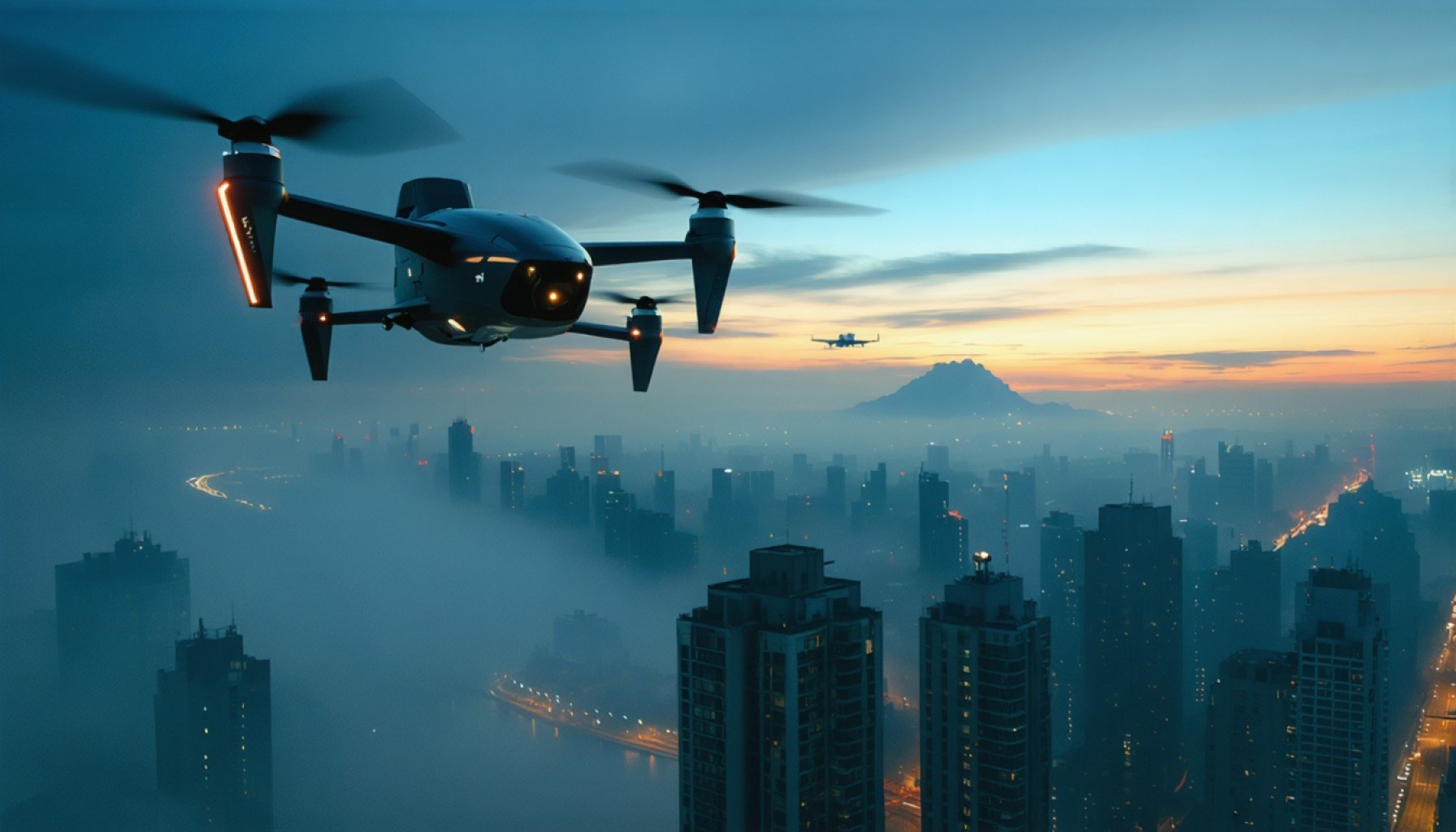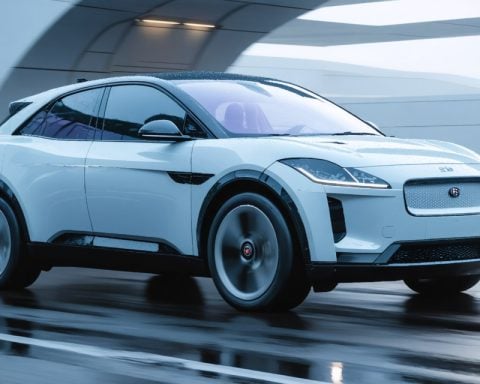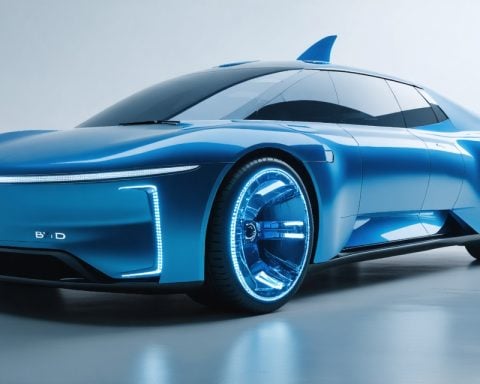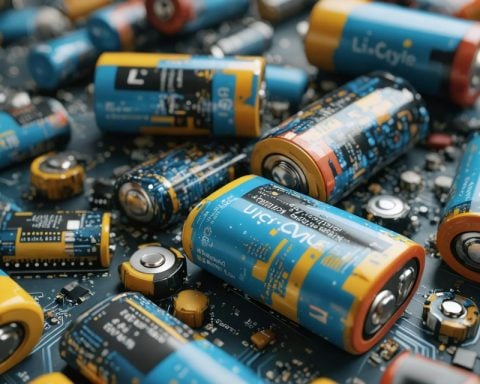- eVTOLs represent a breakthrough in urban transport, offering a greener and quieter alternative to traditional helicopters.
- These vehicles use advanced electric propulsion systems, reducing noise and environmental impact.
- Investments from major companies and startups are driving the development of eVTOL technology, aiming for short-range, on-demand flights.
- Infrastructure, including the creation of vertiports, and updated regulatory frameworks are critical for the successful integration of eVTOLs into urban areas.
- The progress in this field signals a future where personal and efficient aerial commuting may become a common reality.
Imagine a world where you can soar above congested streets, reaching your destination in a fraction of the time. This revolutionary concept is becoming a reality with the advent of eVTOLs, or electric vertical takeoff and landing vehicles. These innovative crafts are set to transform urban transport, offering a glimpse into a future where aerial commuting is as commonplace as catching a bus.
What makes eVTOLs unique? Unlike traditional helicopters that rely on noisy, fuel-guzzling rotors, eVTOLs employ advanced electric propulsion systems. This not only makes them more eco-friendly but also significantly reduces noise pollution—an essential factor for their integration into urban environments.
The future of mobility sees tech giants and startups alike racing to develop viable eVTOL models. With major investments backing companies like Joby Aviation and Lilium, prototypes promise to deliver short-range, on-demand flights, potentially changing how we perceive distance in bustling cityscapes.
Infrastructure and regulation are key challenges. For widespread adoption, cities will need to implement vertiports and adapt air traffic control infrastructure. Regulatory frameworks must also evolve to ensure safety, privacy, and efficiency in this new aerial age.
As technology advances, the dream of a personal, airborne daily commute is inching closer to reality. eVTOLs aren’t just engineering marvels; they represent a paradigm shift in how we’ll navigate our world in the not-so-distant future.
Soaring into the Future: How eVTOLs Promise to Revolutionize Urban Transport
What are the Leading Innovations in eVTOL Technology?
eVTOLs are at the forefront of transforming urban transportation with several groundbreaking innovations:
1. Advanced Battery Technology: Recent advancements in lithium-ion and solid-state batteries are enabling longer flight times and faster charging for eVTOLs. Companies like Joby Aviation are leading with continuous improvements in energy efficiency, aiming for batteries that support hundreds of short-range trips on a single charge.
2. Autonomous Flight Systems: Many eVTOLs are being developed with autonomous capabilities, utilizing AI to manage flight paths, enhance safety, and reduce the need for human pilots. This automation is crucial to scaling operations and minimizing costs.
3. Modular Design: The adaptive design of some eVTOL prototypes allows for swift changes in configuration, from carrying passengers to transporting cargo, offering flexibility in urban logistics.
What are the Pros and Cons of Using eVTOLs in Urban Areas?
Pros:
– Reduced Traffic Congestion: eVTOLs can alleviate road traffic by providing an alternative layer of urban transportation.
– Eco-Friendly: With electric propulsion systems, eVTOLs contribute significantly less pollution compared to conventional aircraft or ground-based vehicles.
– Time Efficiency: Aerial routes offer direct paths, saving time during peak traffic hours.
Cons:
– Infrastructure Challenges: Implementing vertiports and integrating air traffic systems pose significant logistical hurdles.
– Regulatory Obstacles: Developing comprehensive regulatory frameworks to ensure safety and privacy is complex and time-consuming.
– High Initial Costs: The technology and infrastructure investments required to launch and maintain eVTOL systems are substantial.
What is the Market Forecast for eVTOL Technology?
The eVTOL market is poised for significant growth, with industry experts predicting substantial expansion over the next decade. According to market analysis reports, the global eVTOL market size is expected to reach an estimated USD 15 billion by 2030, driven by increasing urbanization and technological advancements.
– Investment Surge: Continued funding from venture capital and government initiatives are propelling research and innovation. Companies like Lilium and others are at the forefront of this burgeoning field.
– Strategic Partnerships: Collaborations between eVTOL manufacturers, tech firms, and city planners are crucial for operationalizing urban air mobility.
– Consumer Adoption: As technology matures and becomes more cost-effective, it’s anticipated that public perception and adoption will increase, further fueling market growth.
The journey toward fully operational eVTOL systems in our cities presents a tantalizing vision of futuristic travel, promising efficiency, and sustainability. However, unlocking their potential demands overcoming technological, regulatory, and infrastructural challenges.

















